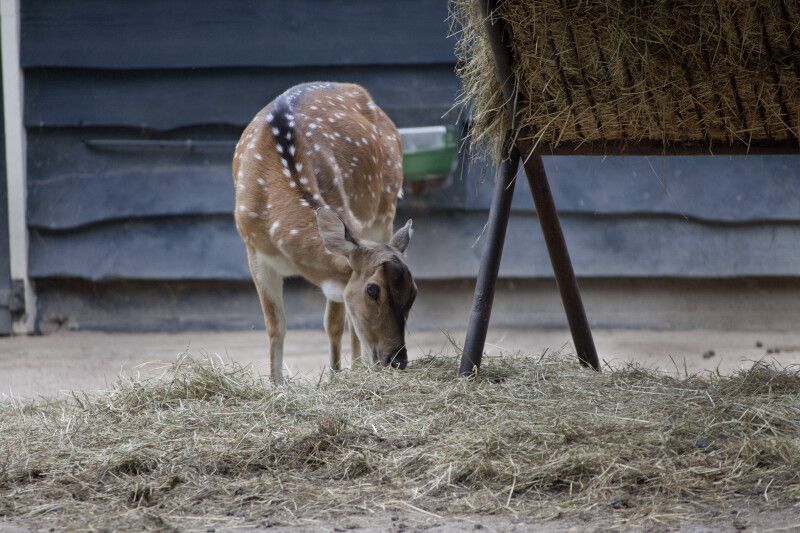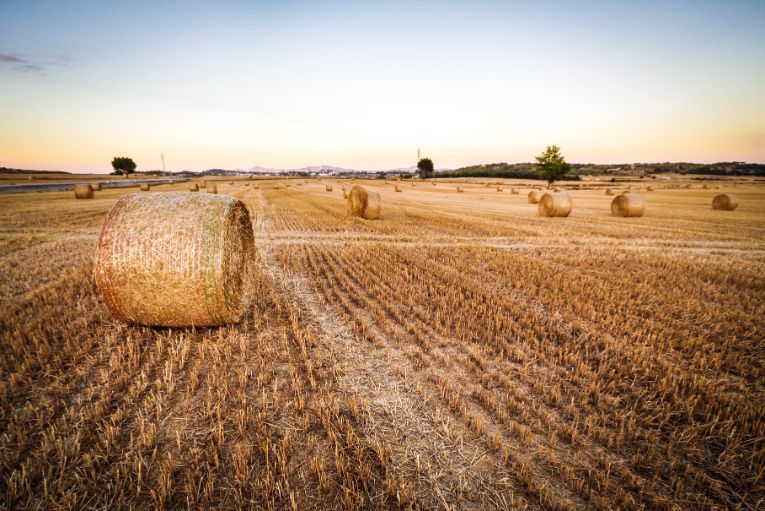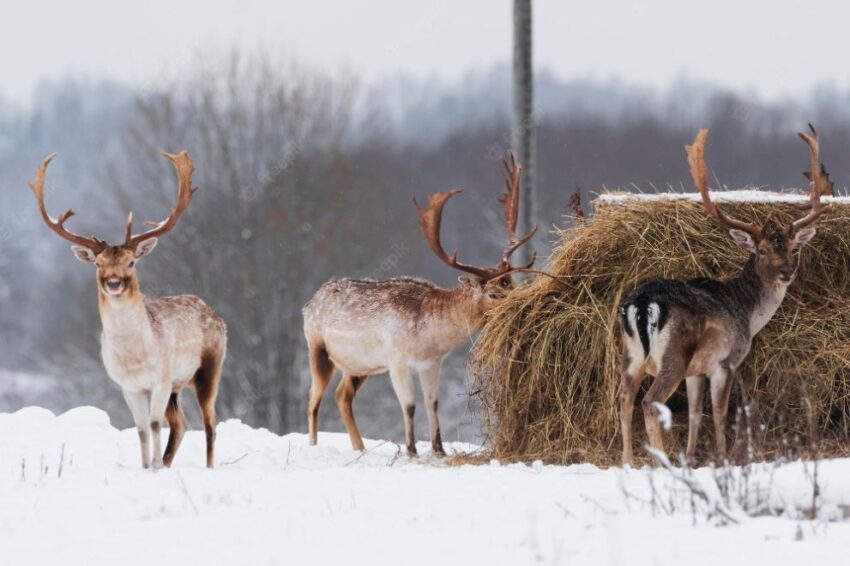Particular diets suit deer. The digestive system of a deer cannot break down coarse foods as quickly as that of an elk, which can consume and digest coarse grasses in the same manner as cattle. For the majority of their summer diet, deer choose delicate grasses, forbs, leaves, and flowers that have a lower cellulose content. With the aid of microorganisms in the rumen, these can digest quickly in the deer’s four-chambered stomach.
Deer naturally browse during the winter. If it happens all at once, having them switch to a diet of hay can be fatal. Can deer eat hay? The simple answer is yes, deer do consume hay. However, later on, digestive issues could arise. Please take the time to read this article and try to determine why deer shouldn’t consume hay.
Can Deer Eat Hay?
Do deer eat hay in light of tales about them passing away from hay-filled stomachs? Or, perhaps more accurately, can deer consume hay? To perfectly answer these questions, all that is required is a basic knowledge of how deer discretion functions.
By doing so, we will be able to comprehend why deer occasionally still succumb to starvation despite having bellies full of hay. Additionally, being aware of how a deer’s diet varies with the seasons will help you decide whether to provide them with particular foods during particular seasons.
Deer are likely to eat browse as fall approaches. There are many more microorganisms to digest this type of food when they do, too. The microorganism level simply decreases and becomes less active when leafy foods and forbs are consumed less frequently. The “can or can’t eat hay debacle” is largely caused by this change in microorganism levels.
Microorganisms are more active during the summer. The deer are therefore able to survive well on hay. A little hay each day would be sufficient as autumn approaches. A problem arises when a deer switches from a diet of only browse to one of hay. This could be fatal for the deer if there are just a few microorganisms present to aid in the hay’s breakdown.

Does Hay Attract Deer?
Hay doesn’t have a particularly alluring smell and won’t draw deer as much as fruits or other kinds of food. Hay won’t draw deer because it is particularly special in any way.
However, a deer will be drawn to an exposed haystack. It’s simple to share and there aren’t many animals that will compete for it. This indicates that hay is attractive to both deer herds and families.
If you regularly replenish your hay source, deer will be more likely to come. Deer will return once they discover a reliable source of food and realize it is there.
Because they are aware of this tactic, hunters will set up feeding stations that they regularly replenish to keep the deer coming. Devoted hunters will return to the location themselves so that the deer get used to human scent.
Should You Feed Deer Hay?
Most likely not, is the quick response. Although hay is deficient in other vitamins, it is extremely high in fiber. Deer do not benefit from the combination of high fiber and low nutritional value. It makes digesting hay challenging for a deer’s digestive system.
Deer do not have the same sense of when to stop eating as humans. Since food is scarce in the winter, they are programmed to eat as much as they can to store energy. This behavior is instinctual in animals.
A deer will simply continue to eat hay once it starts. Because the hay isn’t providing them with enough calories, their stomachs will eventually become full.
This could cause other serious health issues for the deer as well as give them indigestion. It’s critical to remember that there are numerous deer species throughout the world.
Their diet varies greatly between species and is greatly influenced by their respective habitats. For instance, moose prefer to eat more delicate water plants and browse on twigs than white-tailed deer do.
Small amounts of hay may occasionally be beneficial to a deer. If a deer has no other food, for instance, that would be an example.
Pros And Cons Of Deer Eating Hay
For deer, hay has benefits and drawbacks. Here they are below.
Pros
- Offers some nutrition
- May help with clogged bowels
- May be useful in the harsh winter months
Cons
- Potential for indigestion
- Low nutritional value
- Makes the deer feel full and unlikely to eat the food they need
- May interfere with natural foraging habits
In general, feeding hay to deer is only appropriate in situations where the deer are kept in captivity or require additional food. Additionally, it should only be provided in small quantities in addition to other food sources that are more crucial for the survival and well-being of cervids.

Why Shouldn’t Deer Eat Hay?
Deer cannot physically eat rough, coarse grass or other vegetation like this. Hay is particularly dry and coarse, making it one of the most difficult foods for their digestive systems to process.
It is essentially old grass, and while many animals can survive by eating it, a deer’s stomach doesn’t function quite as one might expect. When their bodies have grown accustomed to surviving on fruit, weeds, and leafy plants during the summer, it can be risky for them to abruptly switch to a different food source.
When they suddenly switch or consume too much hay on an empty stomach, their stomachs can remain full and back up because their digestive systems lack the necessary microorganisms to digest the hay.
As you can imagine, when deer need to flee from predators, this can be both very painful for them and impractical. Deer prefer lighter, higher protein, and more energizing vegetation because it gives them the boost they need to flee quickly. If not, they are very simple targets for hunters to capture.
In general, deer won’t eat grass for the same reasons, especially if it is particularly long. Therefore, it might be worthwhile to grow your grass a little longer than usual if you want to discourage deer from visiting your yard (or would prefer they not make a snack of your lawn).
Unfortunately, it is impossible to tell whether or not a wild deer has had time to prepare for a seasonal change in diet, so providing extra hay to them could be a risky oversight. The best course of action is to avoid making such inferences and to continue feeding deer foods that they are certain to adore. Did you know, for instance, that you could easily attract deer using peanuts?
As winter approaches, think about reducing your deer feeding because you may not be able to tell if they have already shifted to “winter diet mode.” Being cautious and concentrating on feeding them starting in the spring is preferable. Deer enjoy many different types of plants, many of which you can simply grow and leave to spread.
Alternatives To Hay For Feeding Deer
There are numerous pre-made deer feed mixtures available. They are available at your neighborhood outdoor recreation store or store that sells hunting supplies. In-person feed purchases give you the chance to speak with local deer enthusiasts who can give you an idea of what the deer in your area eat.
Deer feed typically contains vital components of a deer’s diet and is nutrient-rich. While some are higher in grain, others contain nuts and berries.
Depending on the season and the environment, the ideal blend may change. Deer can be fed leftover fruit and vegetable scraps if you don’t want to purchase deer feed. Since bread contains no nutrients, it is not a good idea to eat it. Deer don’t require as many carbohydrates as people do.

